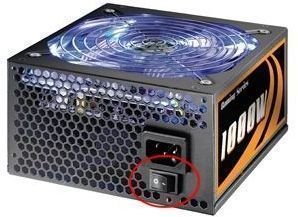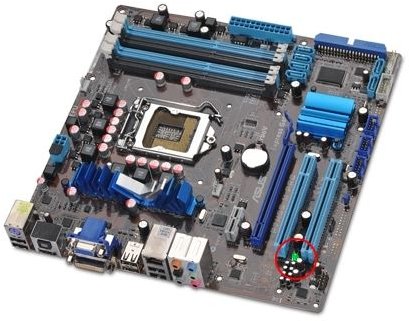What Does the Green Light on My Motherboard Do?
The inside of a computer can be dangerous if handled by an inexperienced user. Most of the danger inside of a computer comes in the form of electric shocks from the power supply and anything connected to it.
In earlier times in computer history, a general rule followed by and taught to computer technicians was to always unplug the computer before working inside. Unfortunately, the modern computer can pose a threat even when unplugged because power supplies use capacitors to temporarily store an electrical charge when the computer is off and unplugged from a power source.
Green Light on Motherboard
The dangers of working inside of a computer prompts most motherboard manufacturers to place a small green light right on the board. Sometimes this light is amber and sometimes it is red. However, regardless of the color, the light has one purpose.
The purpose of the green light is to inform a technician that the computer is “hot” or that the power supply is currently supplying power to the motherboard and other components. This serves two main purposes. First, it acts as a safety device to warn the technician that there is a real threat of receiving an electric shock,
Second, the green light on the motherboard can help a technician recognize whether the power supply is capable of supplying power to the computer. If the technician plugs the power supply into the motherboard and plugs the power supply into a wall socket and the green light doesn’t come on, the technician now knows that there is a power problem somewhere along the electricity supply line.
There are three ways to stop power from reaching a motherboard. The first and most obvious is to unplug the computer (technically, the power supply) from the wall socket. Certainly, this will cause the green light on the motherboard to shut off.

Second, the power supply can be disconnected from the motherboard. Most power supplies and motherboards are equipped with 20 or 24-pin connectors to allow power to flow from the power supply to the motherboard. Disconnecting this 20 or 24-pin connector will cause the green light to turn off.

The third way to cut power to the motherboard is to hit the on/off switch on the back of the power supply. Most modern power supplies have these power switches so technicians can avoid the inconvenience of constantly having to unplug the computer to continue troubleshooting an error. Turning the on/off switch to off on the power supply will cause the green light to turn off.
Conclusion
With so many ways to disconnect and connect power to a motherboard, the green light serves as a safety device warning a technician that the computer is “hot.” Although not always green, the light on the motherboard serves as a warning to protect anyone who may find their hands inside of a computer.
